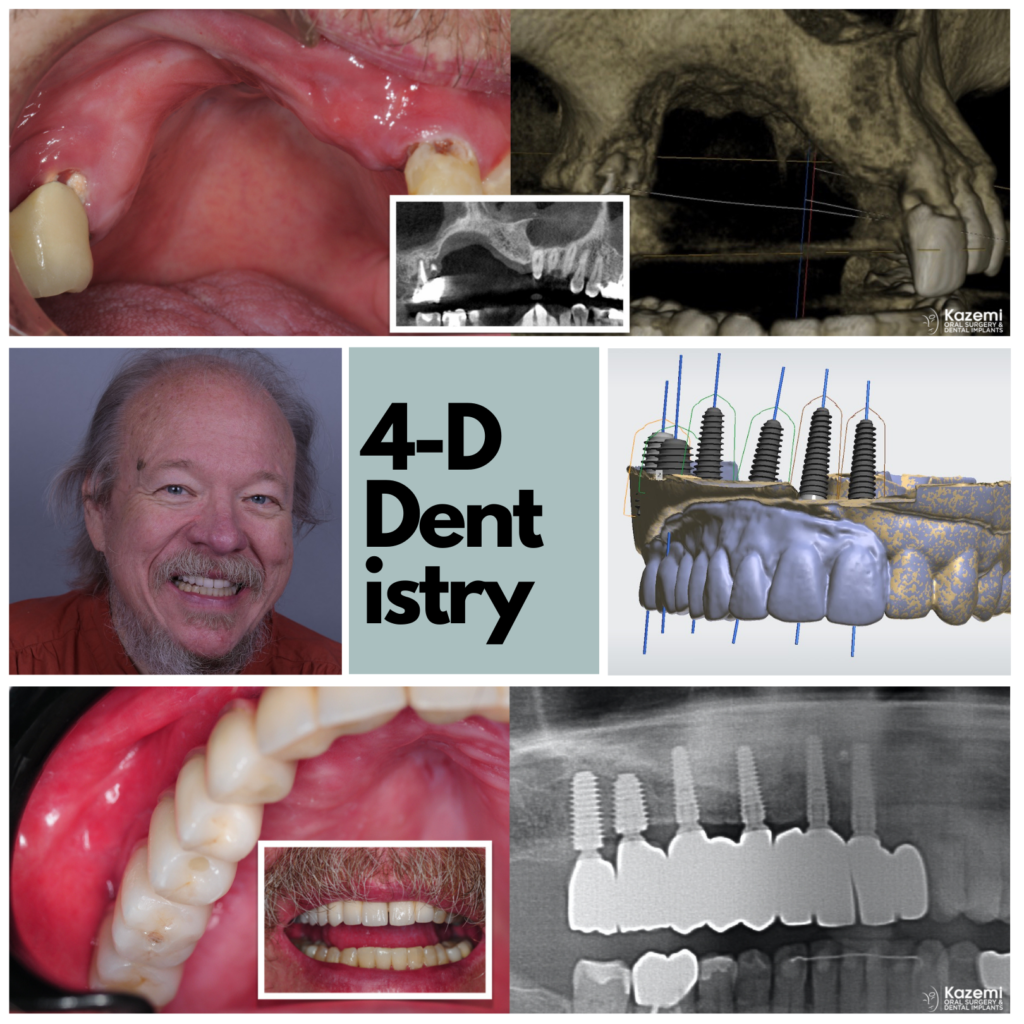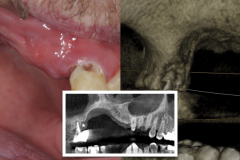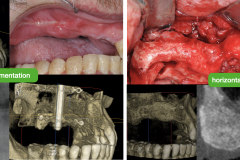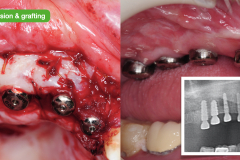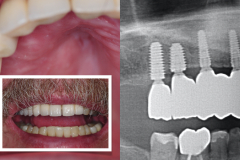The Story:
This patient came to us to discuss his treatment options regarding his upper teeth. He had been using a removable flipper for several years that was extremely hard to eat with and function on daily basis. He had been previously treated for a large jaw cyst which was was removed years ago leaving a large defect in his upper jaw. He had been told by multiple dentists that he does not have enough bone for implants and bone grafting is not possible.
Examination and 3-D imaging revealed a very severe 3-dimensional deficiency of his upper jaw with missing bone and gum tissue. We discussed the treatment requiring reconstruction of his upper jaw bone and gum tissue and development of proper site for support of dental implants and a fixed set of teeth.

Treatment:
The bone reconstruction of his upper jaw defect was accomplished in two stages: First a vertical augmentation using distraction osteogenesis technique. Then 3 months later a horizontal and additional vertical bone augmentation using guided bone regeneration techniques. After 6 months of healing, a computer-assisted imaging and diagnostics were performed to position the planned dental implants. Seven dental implants were planned for support of a fixed set of teeth. Because of his large facial muscles and higher level of anticipated load, adequate number of implants were deemed necessary for long-term success.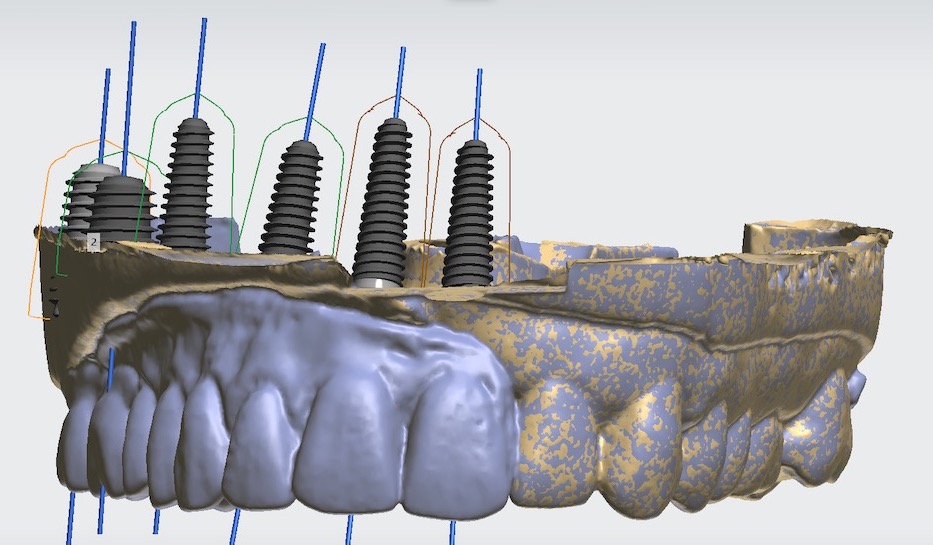
Dental implants were placed using a surgical guide. After a 3 month healing period, a soft tissue revision and gingival graft was done to increase the zone of keratinized gingiva (attached gingiva) necessary for proper protection of the implants and underlying bone. A prototype restoration was first designed and placed on the implants followed by the final restoration in 3 months.

Photo Gallery (Click on first photo to start):
Keys to achieving this result:
- Collaborative team approach between surgeon and restorative dentist
- Development of adequate bone foundation
- Use of CBCT and optical scan for total 3-D computer-assisted planning and implant positioning.
- Precision placement of dental implants according to workup
- A CAD / CAM surgical guide for implant placement based on crown positioning (prosthetic-based implant placement)
- Custom abutments and anatomically fabricated bridge with precision fit
